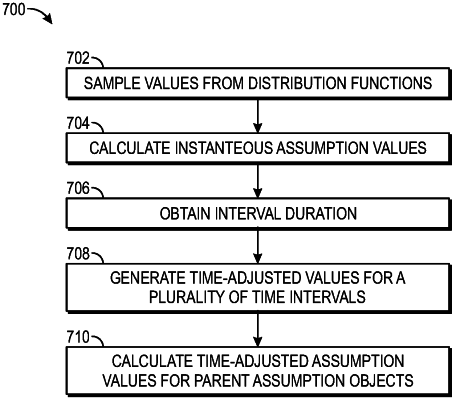| CPC G06Q 10/0635 (2013.01) [G06Q 10/06375 (2013.01)] | 18 Claims |

|
1. A computer system for simulating a risk model over time, the system comprising:
one or more processors; and
one or memories configured to store (i) a risk model corresponding to a model distribution function, and (ii) computer executable instructions that, when executed by the one or more processors, cause the system to execute a simulation of the risk model, wherein the risk model includes:
a hierarchical tree formed of component assumption objects having a parent-child relationship, wherein assumption objects correspond to object distribution functions, wherein:
a simulated value for a parent assumption object is based upon the object distribution functions for the child assumption objects, and
the assumption objects correspond to time functions;
wherein to execute the simulation, the instructions, when executed cause the system to:
sample a value from the object distribution functions corresponding to the assumption objects;
calculate an instantaneous assumption value for the assumption objects based on the sampled value for the assumption object and/or the sampled values for child assumption objects;
obtain an interval duration for the simulation;
generate a time-adjusted value for a plurality of time intervals of the obtained interval duration by applying the time function for the assumption objects to the respective instantaneous assumption values;
calculate a time-adjusted assumption value for parent assumption objects based on the time-adjusted values for the assumption objects;
obtain a number of iterations of the risk model to simulate;
obtain the number of samples from the object distribution functions in accordance with a sampling function, wherein the samples respectively correspond to an iteration of the simulation;
perform, using the corresponding samples, the number of iterations; and
apply a regression analysis to outcomes of the iterated simulations to update the model distribution function corresponding to the risk model.
|